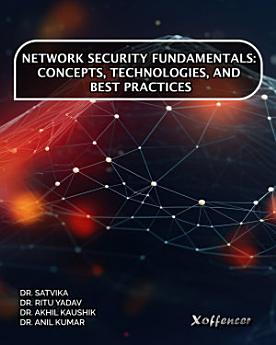NETWORK SECURITY FUNDAMENTALS: CONCEPTS, TECHNOLOGIES, AND BEST PRACTICES
About this ebook
About the author
Dr. Satvika obtained his doctorate in the field of Artificial Intelligence (Sentiment Analysis). She has done her Master of Technology degree in Computer Science Engineering from Chaudhary Devi Lal University, Sirsa. Since 2006, she has worked as an Assistant Professor in the Computer Engineering department at The Technological Institute of Textile and Sciences, Bhiwani, Haryana, India's. She has published more than 40 research papers in top international journals and myriad International and National Conferences. Her research interests include Artificial Intelligence, Data Science, Machine Learning, Cryptography and network security. She has over 20 years of research and work experience.
Dr. Ritu Yadav has received his Doctorate in the field of Metamaterial Patch Antenna. She graduated from NITTTR Chandigarh in India with a Master's in Electronics and Communication Engineering. She has been an assistant professor in the ECE department at The Technological Institute of Textile and Sciences in Bhiwani, Haryana, India, since 2006. She has a rich experience of20 years in Teaching and Industry. More than 30 of her research papers have been published in prestigious publications and conferences. Her areas of interest in research include Signal and System, Electromagnetic Waves, Network Analysis, etc.
Dr. Akhil Kaushik has completed his doctoral research in the field of DNA Cryptography from Amity University. He is a master’s degree holder from Central Queensland University, Melbourne, Australia in the field of IT. Currently employed at The Technological Institute of Textile and Sciences, Bhiwani, India as an Assistant Professor in the Computer Engineering Department, he has more than 19 years of industrial and teaching experience. His major research areas are Cryptography, Network Security and Data Science. He has over 20 research publications in International Journals of high repute and has presented his research in more than 37 International and National Conferences.
Dr. Anil Kumar has received his Doctoral Degree in the field of Wireless Sensor Networks recently. He has done the master’s degree in Computer Science and Engineering from the Guru Jambheshwar University of Science and Technology, Hisar, India. Currently he is working as an Assistant Professor in The Technological Institute of Textile and Sciences, Bhiwani, Haryana, India. He has published 12 papers in reputed International Journals. He has also presented 27 technical papers in various International Conferences and National Conferences. His research interests include Wireless Sensor Network, Artificial Neural Network and Network Security. He has got nearly 19 years of work experience in teaching and Industry.








